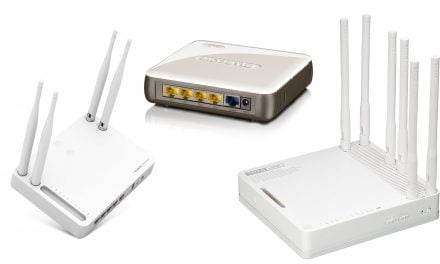5G’s high performance guarantees that network attacks will also be scaled up—here are perennial ground rules for enhanced security.
Amidst the hype around foldable phones and advances in computational photography, nothing set the scene for the future of smart-device applications quite like 5G.
From streaming 4K movies to facilitating augmented reality and autonomous transportation, 5G will fundamentally change the future of connectivity, offering a degree of seamlessness not seen in previous generations of wireless networking.
It is not surprising then that ASEAN, with its huge appetite for growth, is keen to leverage 5G as a platform for digitalization. Researchers in Thailand have already deployed 5G-connected robots on the frontlines of the fight against COVID-19 to care for infected patients and screen potential cases, while the Singapore Government has pledged S$40 million to build an open, inclusive 5G ecosystem with its eye on maritime operations and urban mobility.
The first wave of 5G applications will transform industrial Internet of Things (IoT) systems, powering the ability to transmit vast amounts of data with low latency. Being able to capture and use such large amounts of data will help businesses and regulators improve monitoring of critical infrastructure and facilitate faster, smarter business decisions.
However, the very proliferation of low-cost, low-power, unsecured IoT sensors that provide the aforementioned access to data and connectivity, will also present even greater security risks for both operators and end users if not managed correctly from the start. The move into 5G networks via IoT and the corresponding shift towards edge computing, dramatically increases the number of potential intrusion points and creates a highly-distributed computing environment. This requires a fundamental re-look at the way we approach 5G cybersecurity—one that is holistic and transformative, even in the face of familiar foes such as distributed denial of service (DDoS) attacks and malware.
Furthermore, with companies today still struggling with cybersecurity challenges around 4G, the same weaknesses will persist and will be further amplified exponentially under 5G until they are addressed. It is especially critical for businesses to establish the right security approach for the emerging 5G networks, given that 4G could be exploited by hackers as a potential gateway to 5G networks.
With the wider economy—and even lives—at stake, the time to develop a comprehensive end-to-end security strategy is now. While each organization is unique, the five approaches outlined below can serve as fundamental pillars of any 5G security strategy moving forward:
- Adopt a preventive approach to security
With 5G networks, organizations will require application/layer 7 visibility and control across all layers at all locations. This will help reduce the attack surface and enable the detection of anomalies and malformed traffic. Thus, organizations will become much better equipped to proactively handle threats. - Increase security automation
As networks become more open, virtualized, and distributed, it is essential to gain actionable insights at cloud scale. Cloud-based threat prevention, powered by advanced big data analytics and machine learning techniques, will help provide a faster response to both known and unknown threats. - Establish contextual security outcomes
Data-driven threat prevention provides contextual security outcomes. It is important to leverage GRE tunnelling protocol (GTP) visibility and threat intelligence, and correlate the threat to the attack source, to find and isolate infected devices before botnet attacks can potentially take place. - Integrate security functions with open API
A single pass-platform with open APIs provides operational simplicity with NFV/SDN architectures. As 4G/5G networks evolve, more functions will become virtualised and deployed in telco cloud environments. Advanced network security efficacy being put in place with 4G needs to seamlessly evolve with the networks. - Educating end-users
Perhaps the most critical of the ‘five commandments’ in the 5G era is having the right end-user education frameworks in place. 5G is still in its infancy, so it will be some time yet before we have a clear picture of the security implications of its rollout across the region and globe.
Nevertheless, the speed and volume at which 5G transmits data is a good indication that network attacks will be exponentially faster and larger in scale. With more employees relying on smart devices for telecommuting and working on the go, this creates a tremendous cybersecurity risk from people working and sharing information without the protection of the company’s cybersecurity protections.
In this new future marked by instantaneous connectivity and computing at the edge, teams will need to learn to work alongside new tools such as automation and machine learning in order to manage cybersecurity in a broader, more complex environment.
If done properly and methodically, the transition to 5G will be a tremendous business enabler for companies and their clients, maximizing transformation opportunities, while avoiding many of the missteps that may have been overlooked in the earlier 4G era.

















